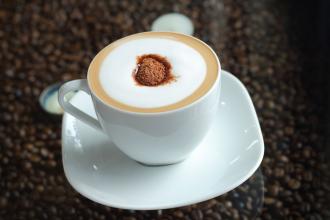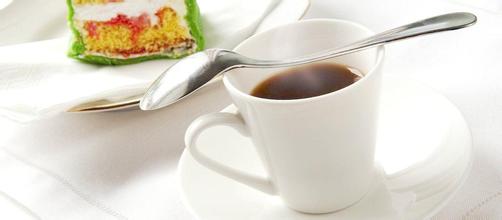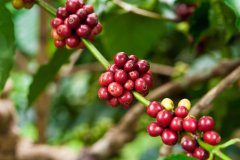Soft and smooth Kona Coffee from Hawaii introduces the Manoa Valley on Oahu.
The earliest settlers in Hawaii arrived here between 300 and 400 AD, and historians speculated that they were from the Marcos Islands. People are scattered into different tribes that live on the island and are led by hereditary chiefs. The earliest Hawaiian residents created the rich musical culture of Hawaii, although not many words have been preserved.
Europeans discovered Hawaii by accident. They were looking for a legendary passage to the east where spices were produced, but they found the richest pearl in the Pacific Ocean. A captain named James Cook landed at Kauai in 1778 to resupply his ship. He encountered severe cold and storms on his way back, so he had to return to Hawaii at the beginning of the next year and anchor on a beach in Kona. Since then, the Hawaiian islands have become an important port of call on world trade voyages. The chiefs of Hawaii exchanged sandalwood, the island's specialty, for weapons, goods and livestock with passing ships. From the 1820s, Western religion began to spread widely on the island, and many churches built at that time are still in use today.
With the development of tourism in Hawaii, tourists can visit coffee farms, see or participate in various processes such as coffee harvest, coffee bean processing, baking and grinding, and make a cup of coffee that really belongs to them. In the Kona region, there are about 600 independent coffee farms, most of which are small family farms, usually between 18 and 42 acres. Kona Coffee brings more than $10 million a year to these coffee farms. Hawaii is the largest of the Hawaiian islands, so it is also called the theBigIsland. Kona Coffee is produced in the western and southern part of the Kona region of Hawaii. Coffee trees are scattered on the slopes of Hualalai and MaunaLoa, which is 150m to 750m above sea level, which is perfect for coffee growth.
The excellent quality of Kona coffee benefits from the suitable geographical location and climate. Coffee trees grow on the slopes of volcanoes, and their geographical location ensures the altitude needed for coffee growth; the dark volcanic ash soil provides the minerals needed for coffee growth. The climatic conditions are very suitable. In the morning, the sun gently passes through the air full of water vapor. In the afternoon, the mountains will become more humid and foggy, and the white clouds surging in the air are natural umbrellas for coffee trees. And the evening will become sunny and cool, but there is no Frosts Descent. Because of the suitable natural conditions, the average yield of Kona coffee is very high, reaching 2240 kg per hectare, while in Latin America, the yield of coffee per hectare is only 600kg ~ 900kg.

Important Notice :
前街咖啡 FrontStreet Coffee has moved to new addredd:
FrontStreet Coffee Address: 315,Donghua East Road,GuangZhou
Tel:020 38364473
- Prev

Coffee cultivation and export in Venezuela San Cristobal region
The coffee industry in Venezuela has been shrinking in recent years. The government encourages coffee cultivation by introducing new varieties and providing loans to farmers. Venezuelan coffee production accounted for more than 7% of global coffee production in the 19th century, but since the discovery of oil in the early 20th century, the coffee industry has been in decline. At present, Venezuelan coffee production accounts for less than 1% of the world's output.
- Next

San Juan, Honduras, washed bourbon coffee, Asian coffee, Honduran coffee flavor.
San Juan Ciudo is a small village in central Honduras, 40 kilometers northeast of Tegucigalpa, the capital of Honduras. The town is under the jurisdiction of Francisco Morazn. In addition, Francisco Morazn has jurisdiction over Nuevo Rosario, Guacamaya and Plan Grande, with a total population of about 1400. Although San Juan Theodore is famous for its mineral deposits in history,
Related
- Does Rose Summer choose Blue, Green or Red? Detailed explanation of Rose Summer Coffee plots and Classification in Panamanian Jade Manor
- What is the difference between the origin, producing area, processing plant, cooperative and manor of coffee beans?
- How fine does the espresso powder fit? how to grind the espresso?
- Sca coffee roasting degree color card coffee roasting degree 8 roasting color values what do you mean?
- The practice of lattes: how to make lattes at home
- Introduction to Indonesian Fine Coffee beans-- Java Coffee producing area of Indonesian Arabica Coffee
- How much will the flavor of light and medium roasted rose summer be expressed? What baking level is rose summer suitable for?
- Introduction to the characteristics of washing, sun-drying or wet-planing coffee commonly used in Mantenin, Indonesia
- Price characteristics of Arabica Coffee Bean Starbucks introduction to Manning Coffee Bean Taste producing area Variety Manor
- What is the authentic Yega flavor? What are the flavor characteristics of the really excellent Yejasuffi coffee beans?

